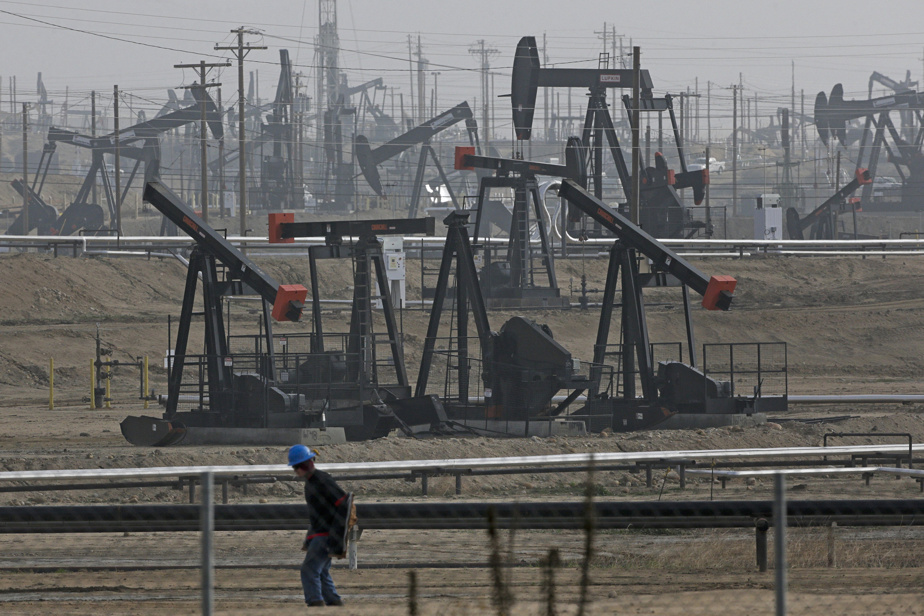(London) Oil prices fell Thursday in the wake of larger-than-expected US crude reserves and announcements from the US central bank supporting the dollar.
Around 7 a.m. (Eastern time), the price of a barrel of North Sea Brent, for delivery in August, lost 0.73% to $82.00.
Its American equivalent, the barrel of West Texas Intermediate (WTI), for delivery in July, fell by 0.84% to 77.84 dollars.
“After the US central bank left its interest rate unchanged” and “planned only one reduction in borrowing costs this year”, “sentiment has deteriorated somewhat” in the market black gold, notes Tamas Varga, of PVM Energy.
However, the prospect of higher rates strengthens the dollar, which makes it more expensive and therefore discourages purchases of crude, denominated in this currency.
On Wednesday, the Federal Reserve (Fed) as expected left rates unchanged at their highest level in more than two decades, in the range of 5.25% to 5.50%.
For 2024, the monetary institution is now banking on a single rate cut, where, in March, it planned three reductions.
The sentiment also deteriorated for black gold after the publication of the US Energy Information Administration’s report on US inventories on Wednesday, which highlighted an increase in crude reserves of 3.7%. million barrels during the week ended June 7.
The API, the federation of professionals in the sector, however, expected a decrease in commercial crude reserves over the period.
This “unexpected increase” in US inventories comes on top of the latest report from the International Energy Agency (IEA) on Wednesday which claims “that the global oil market is facing a “major” surplus this decade due to shift away from fossil fuels,” says Swissquote Bank analyst Ipek Ozkardeskaya.
The IEA estimates that total supply is expected to reach nearly 114 million barrels per day by 2030, 8 million barrels per day above projected global demand by that date.




